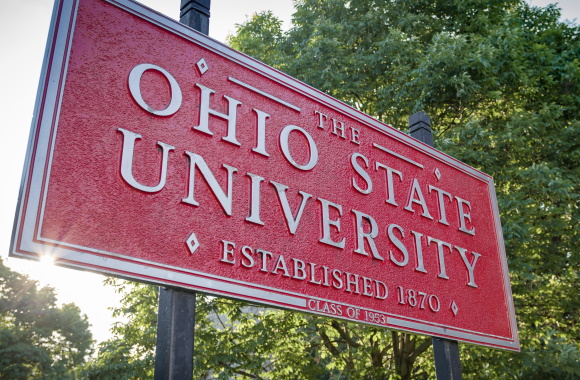
Key Takeaways
- Ohio State University has implemented a ban on land acknowledgements for general use, citing a new state law aimed at promoting institutional neutrality on social and political issues.
- The policy allows land acknowledgements only if they have a direct connection to the course content, prohibiting their display at university events, syllabi, websites and other official materials.
- Despite the ban, an OSU professor argued that every class could use a land acknowledgements due to the university's historical ties to indigenous land.
Ohio State University has banned the widespread use of land acknowledgements, citing a relatively new state law that cracks down on diversity, equity and inclusion. The only caveat is if the land acknowledgement has a direct tie to the subject of a course, the policy states.
“Land acknowledgements are considered statements on behalf of an issue or cause and cannot be issued on behalf of a unit, college, department, etc., used at university-sponsored events (virtual or in person) or placed on any university channel or resource such as websites, social media, signage, meeting or event agendas, event programs, etc.,” according to the new policy, announced in late August.
“Land acknowledgements should not be used in written class materials or stated verbally unless there is a direct tie to the subject of the course,” the policy states. “Ohio State respects the history of the state and university and will continue to engage in research, academic scholarship, conversations and opportunities to honor this history, but will not issue statements taking a position on, endorsing, opposing or engaging in advocacy or calls to action around this.”
The new policy is part of the university’s “SB 1 Implementation Committee” regulations. The law, which was passed in March, requires public institutions maintain institutional neutrality, and not weigh in on controversial political or social issues not relevant to their primary mission, among other provisions.
Ohio State spokesperson Ben Johnson told Inside Higher Ed that land acknowledgements can still be used in some cases.
The policy “does not categorically prohibit land acknowledgements,” Johnson said via email. “Faculty retain their academic freedom and may address acknowledgements where relevant to the subject matter of the class.”
One OSU professor argued on social media a tie can be made in every class.
“One way to [cite a direct tie] is to make the truth of the Land-Grab university within a settler colonial context crystal clear by stating the following: The ‘subject’ of EVERY course taught at Ohio State University has ‘a direct tie’ to Land Acknowledgments because EVERY course is taught on the land of the Shawnee, Delaware, Miami, Ojibwe, Seneca, Wyandotte, Peoria, Potawatomi, and other Indigenous nations,” wrote art Professor Richard Finlay Fletcher on Instagram.
Inside Higher Ed reported that “Ohio State was founded in 1870 as a land-grant university in accordance with the Morrill Act of 1862, by which the U.S. government gifted more than 11 million acres of expropriated Indigenous land to fledgling public universities as capital for the endowments.”
MORE: New Ohio law bans DEI, outlaws faculty strikes, requires U.S. civic literacy course











